Key takeaways:
- Preserving family history involves collecting tangible artifacts, sharing stories with relatives, and balancing digital and physical records to enrich narratives.
- Genealogy fosters a sense of identity and belonging, strengthens family bonds, and can serve as a therapeutic journey by connecting past struggles to present experiences.
- Organizing family documents through categorization and digitization ensures easy access and preservation for future generations.
- Utilizing technology, such as genealogy software and online platforms, enhances research capabilities and fosters connections with distant relatives.
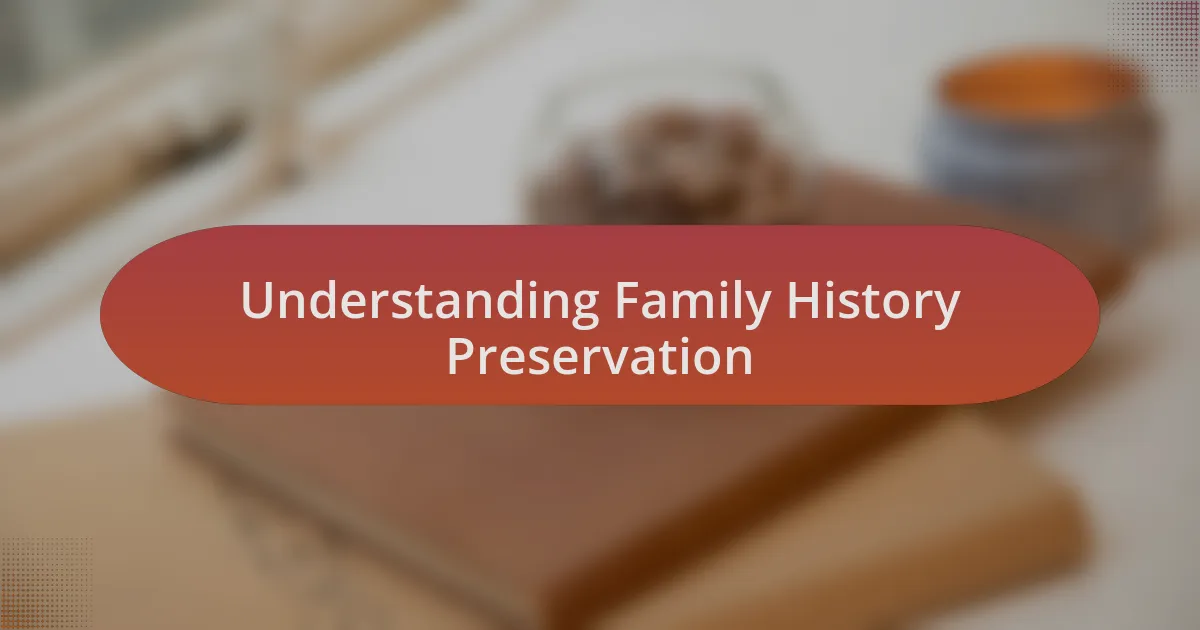
Understanding Family History Preservation
Preserving family history isn’t just about collecting documents or photos; it’s about capturing the essence of who we are as a family. I remember sifting through my grandmother’s old letters, feeling a deep connection to her experiences, her joys, and her struggles. Have you ever held something that made you feel closer to your ancestors? Those tangible pieces of our past can evoke emotions and stories that might otherwise be forgotten.
Understanding family history preservation also means recognizing the different formats through which our stories can be told. From digital archives to handwritten journals, each method offers a unique touch. I often find myself reflecting on how digital tools have transformed the way we store memories. Are we losing something valuable by moving exclusively to digital means? In my experience, a balance between physical mementos and digital records can truly enrich our family narratives.
Moreover, preserving family history often involves engaging with relatives and gathering their stories. I once sat down with my aunt, who shared tales of my father’s childhood that I had never heard before. It was a revelation, a reminder that every family member holds a piece of the puzzle. How can we ensure that these stories are not only heard but cherished for generations to come? Listening actively and documenting these conversations is crucial in keeping our family history alive.
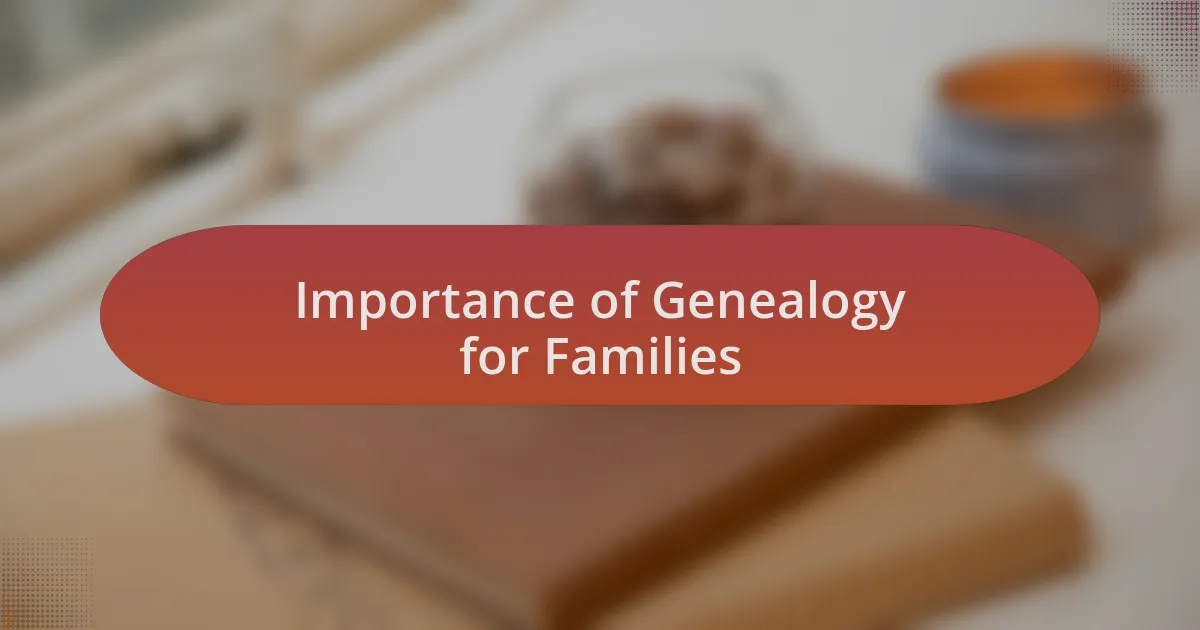
Importance of Genealogy for Families
The value of genealogy for families extends far beyond mere historical interest; it fosters a sense of identity and belonging. I still recall the moment my mother shared her family’s immigration story, detailing their struggle and resilience. It made me realize how their journey shaped not only my family’s past but also my present. Have you ever discovered a lineage that gave you a newfound appreciation for your family’s legacy? There’s a profound connection in knowing where we come from.
Genealogy also serves as a bridge that strengthens family bonds. I remember organizing a family reunion where we compiled our family tree together. Watching my younger cousins engage with our shared history sparked a sense of pride and excitement. This experience led me to wonder how many family gatherings revolve around similar stories, creating moments of connection and unity. By involving everyone in the exploration of our lineage, we can nurture relationships that might otherwise fade.
Furthermore, tracing our ancestry can be a therapeutic journey, helping us navigate our own lives. As I delved deeper into my family’s past, I found parallels between their challenges and my own. This realization brought comfort and a sense of continuity in times of uncertainty. Have you ever felt a connection to someone you’ve never met, purely because of shared experiences? Recognizing that our struggles aren’t new can empower us in our personal lives. Genealogy isn’t just about facts; it’s about understanding our place within a larger narrative.
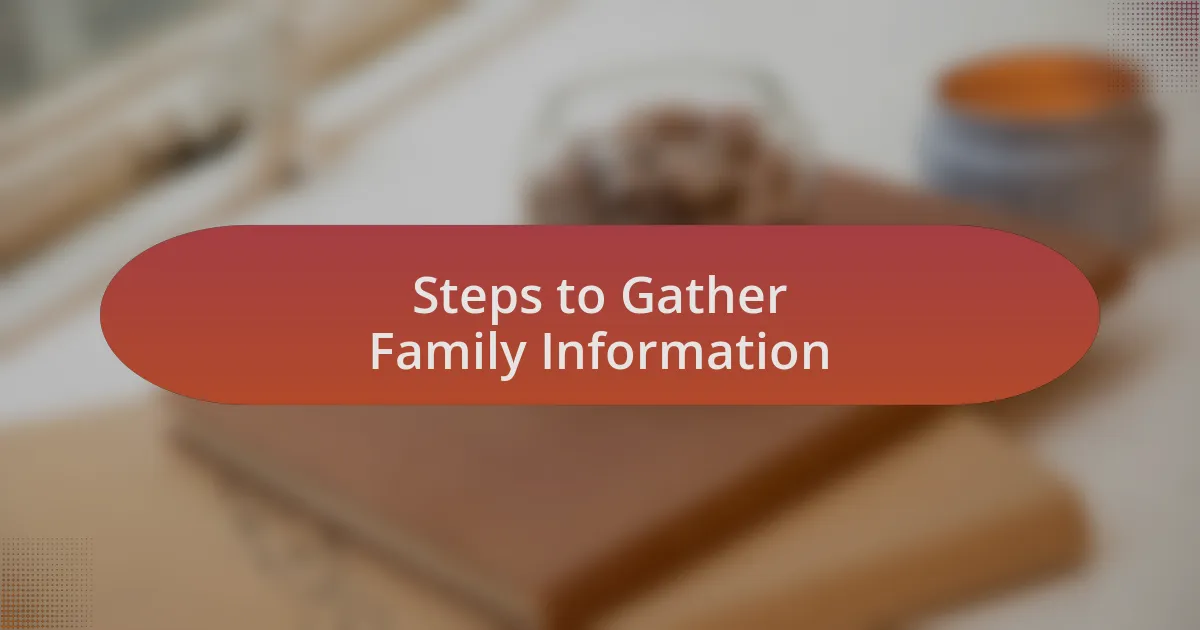
Steps to Gather Family Information
Gathering family information starts with conversations. I remember sitting down with my grandparents, listening intently as they recounted stories from their youth. Each tale was like a puzzle piece, revealing not just facts but emotions and values that defined our family. Have you ever taken the time to ask your relatives about their lives? You might be surprised at the depth of memory and insight they hold.
Next, I recommend diving into old documents and photos. I stumbled upon a dusty box of letters and photographs in my parents’ attic, which opened up a treasure trove of insights about my great-grandparents. Each item had a story, connecting me to faces I had only seen in black-and-white. Looking at those faded photos made me feel like I stepped back in time; can you imagine how much richer your family’s narrative could become through these finds?
Lastly, leveraging technology can enhance your research. I often use online genealogy platforms to connect with distant relatives and gather information. It’s empowering to see family trees come to life with just a few clicks, revealing connections I never knew existed. Isn’t it fascinating how a simple search can link us to ancestors who lived in a different era? Combining traditional methods with digital tools creates a well-rounded approach to preserving family history, ensuring future generations can continue the story.

Organizing Your Family Documents
When it comes to organizing family documents, I find that categorization is key. Early on, I created separate folders for different branches of my family tree, which made it so much easier to find what I was looking for later. Have you ever felt overwhelmed by a pile of papers? Trust me, a little organization goes a long way in preserving those precious memories.
I also recommend digitizing important documents. I remember carefully scanning my grandmother’s marriage certificate, feeling a mix of nostalgia and gratitude as I preserved a piece of her history. By saving those records on my computer, I not only protect them from fading and deterioration but also make them easily accessible for future generations. How wonderful would it be for your children to have a digital archive of their family’s history at their fingertips?
Lastly, maintaining a chronological order can be incredibly impactful. I once arranged my family’s history by decade, which allowed me to see overarching trends and events that shaped our experiences. It was like watching a movie unfold; the context of each document came alive. Have you considered how timelines can provide deeper insights into your family’s journey? It might just be the missing link that adds richness to your family’s story.
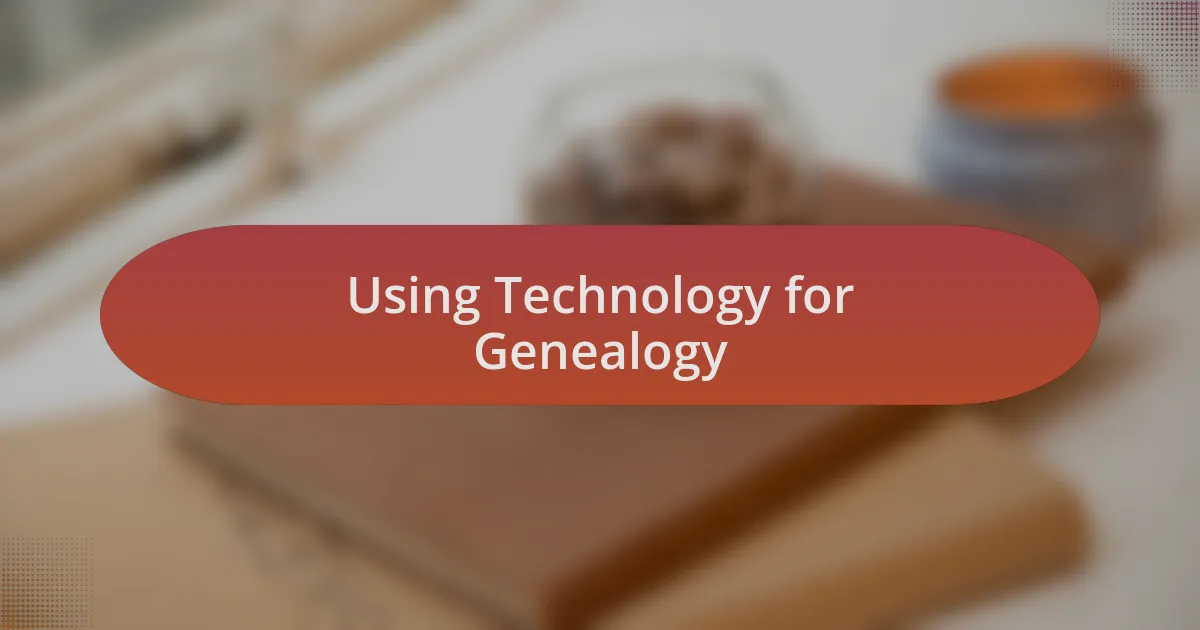
Using Technology for Genealogy
Using technology for genealogy has opened up a whole new world for family historians. I remember the thrill of discovering online databases teeming with records I never knew existed—each click felt like unearthing a hidden treasure. Have you ever experienced that rush when a long-lost ancestor suddenly appears on your screen? It feels like magic, doesn’t it?
Another powerful tool I’ve embraced is genealogy software, which allows me to create intricate family trees. I can easily visualize connections and pathways between relatives that I might have otherwise missed. The software’s ability to link historical records to my family’s narrative has enriched my understanding and made me reflect more deeply on our shared history. How has technology helped you untangle the complex web of your ancestry?
I also love using social media to connect with distant relatives and fellow genealogy enthusiasts. I recall a time when a simple post about my great-grandfather led to unexpected conversations and valuable insights from newfound relatives. It made me realize how technology not only preserves history but fosters community and connection. Have you reached out across the digital landscape to gather different perspectives on your family’s story? The possibilities are endless.
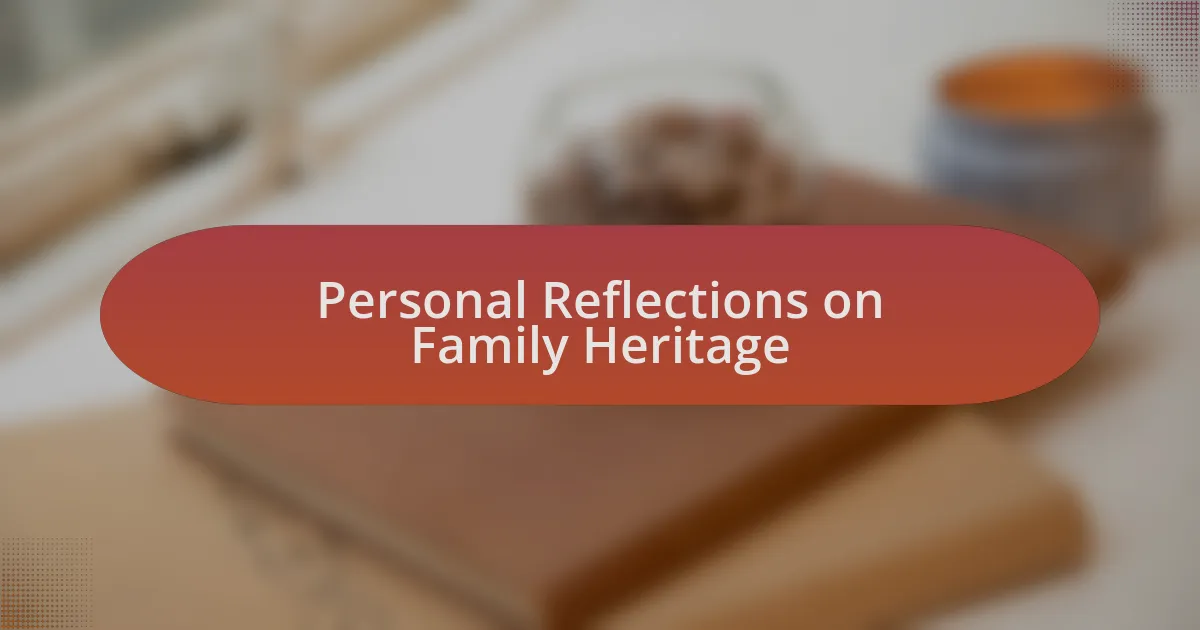
Personal Reflections on Family Heritage
When I think about my family heritage, I often reflect on the stories passed down through generations. One poignant memory is sitting at my grandmother’s knee, captivated by her tales of life in a small village. Those stories shaped my identity, reminding me that my roots are not just names on a family tree but living experiences that enriched our family’s fabric.
There was a moment when I stumbled upon an old family photo album at a reunion, filled with faded pictures of relatives I had never met. Each image sparked a flood of emotions—curiosity, nostalgia, and even a bit of sadness, as I realized some stories had been lost to time. Have you ever felt that bittersweet connection to those who came before you? It’s an enlightening reminder of our shared legacy and the responsibility to keep those memories alive.
Preserving family heritage has become a deeply personal mission for me. I often find myself jotting down anecdotes in a journal, aiming to capture the essence of our family’s journey. This practice not only honors our past but also invites future generations to understand the richness of their lineage. How are you ensuring that your family’s stories are remembered, treasured, and shared?